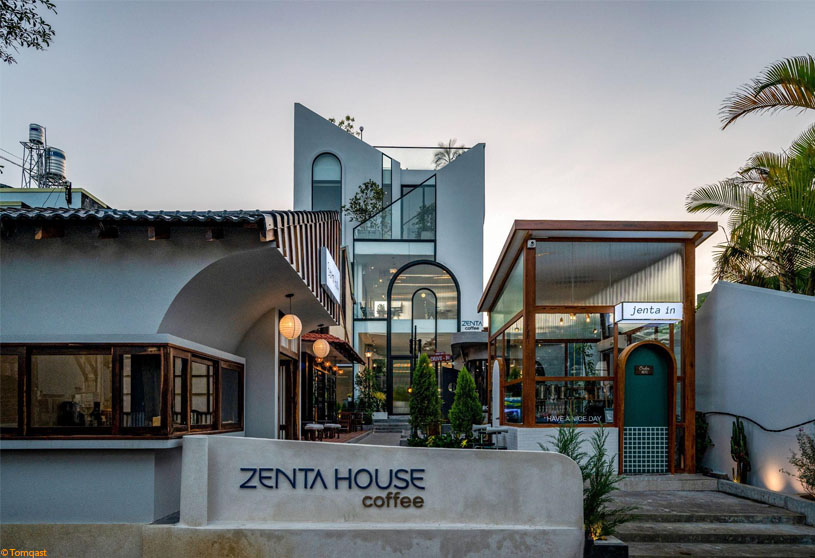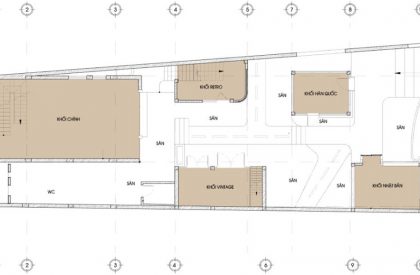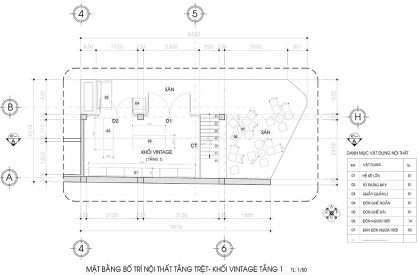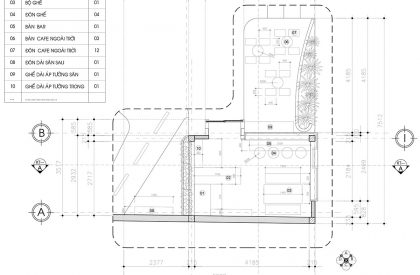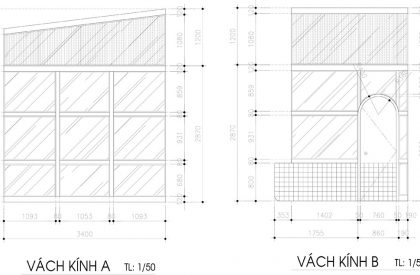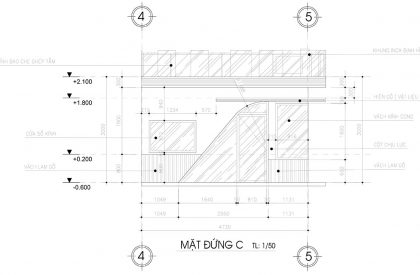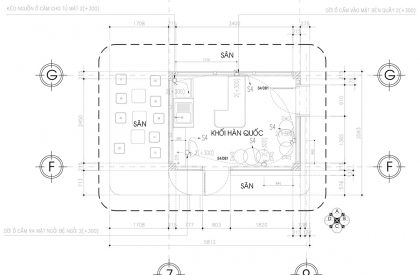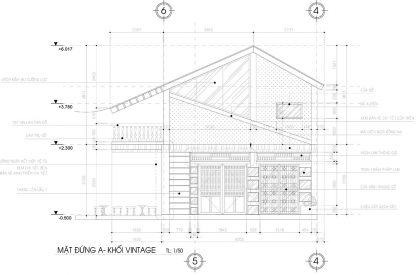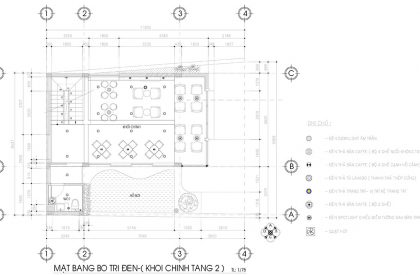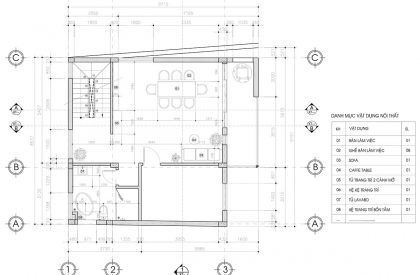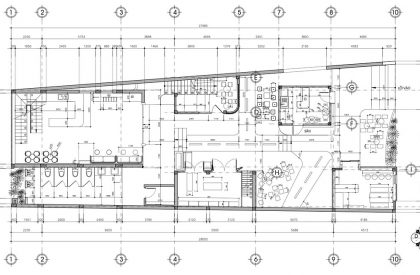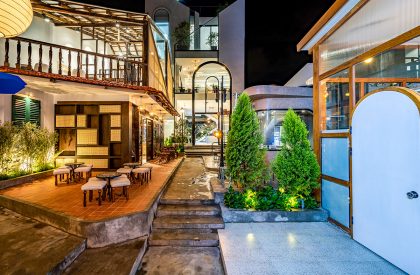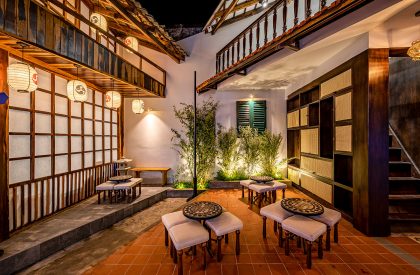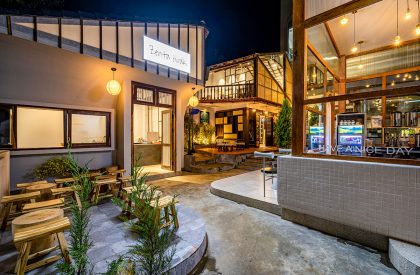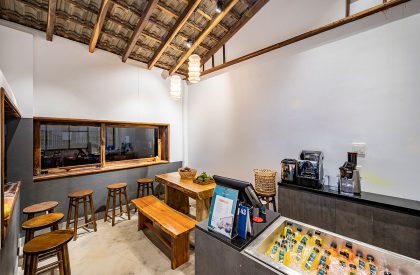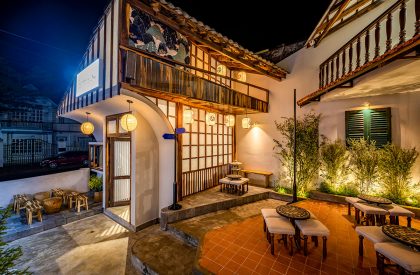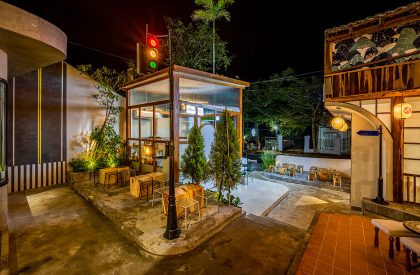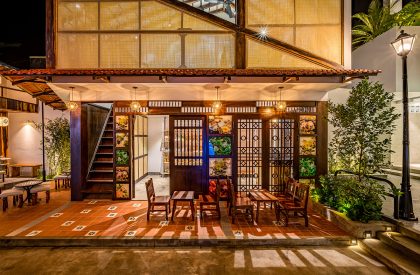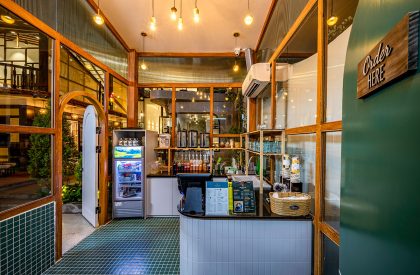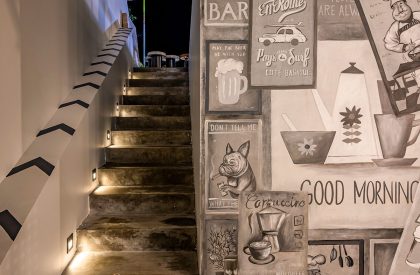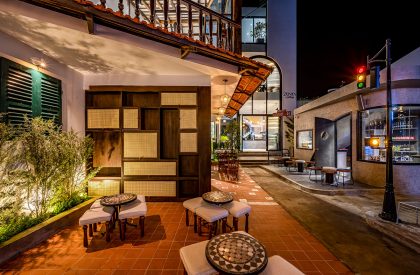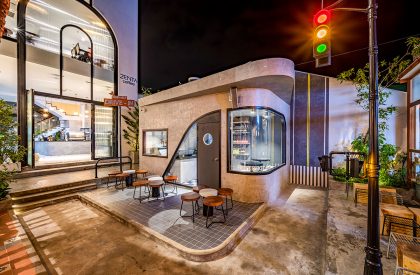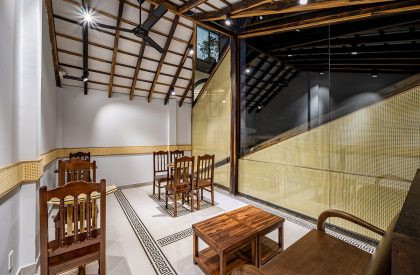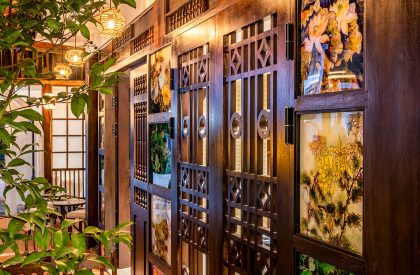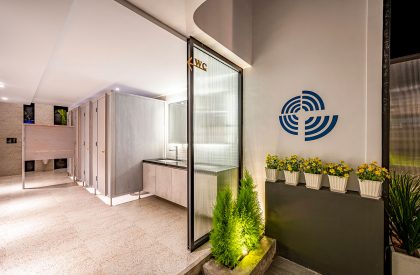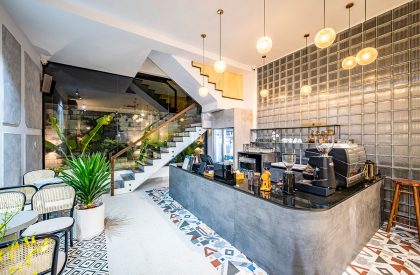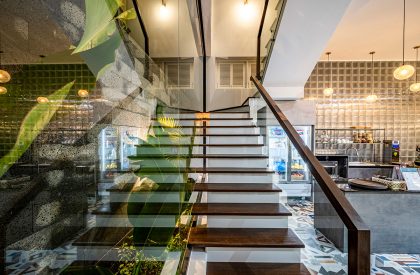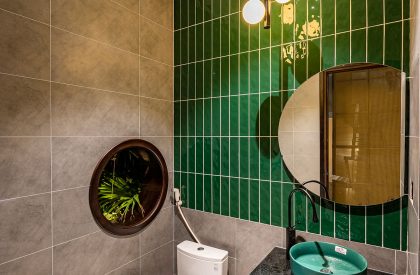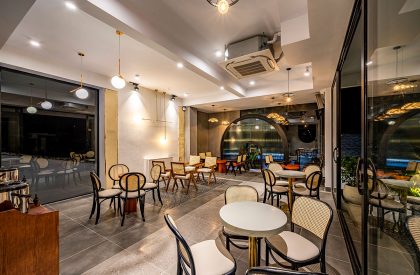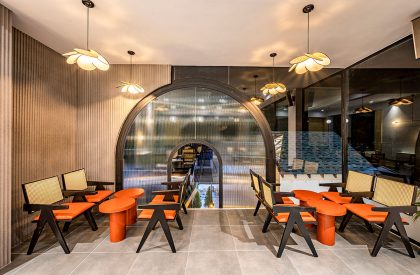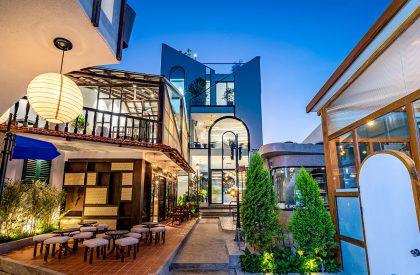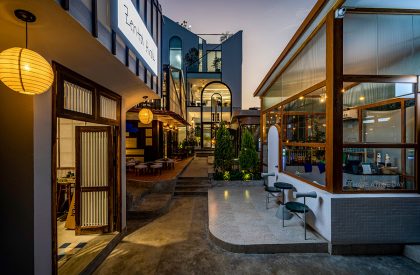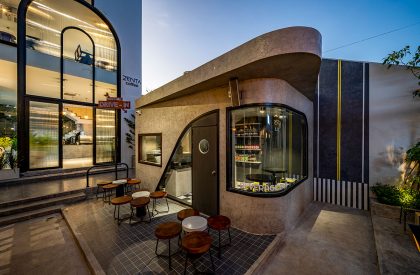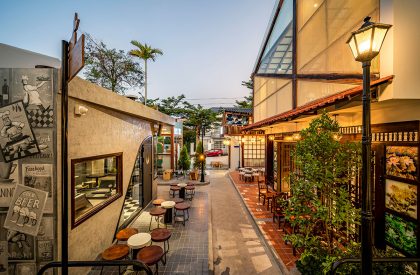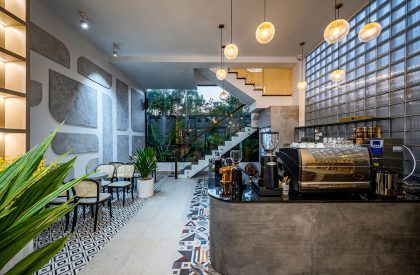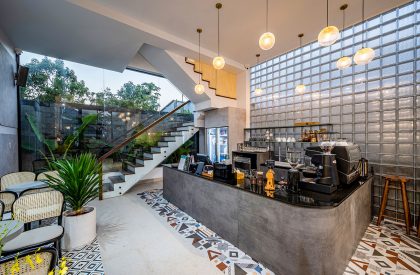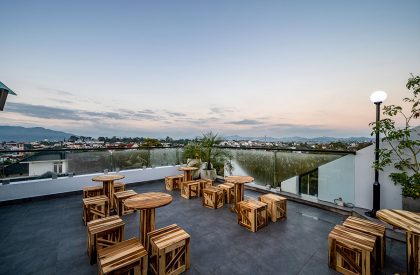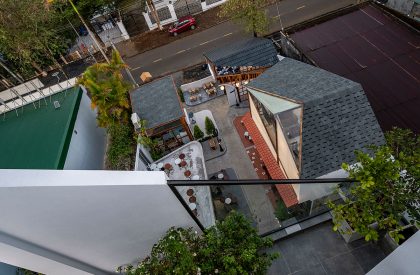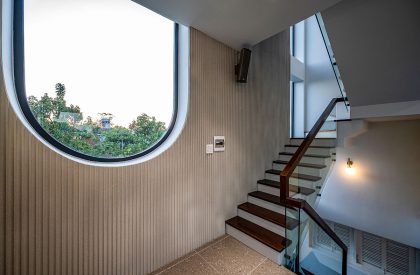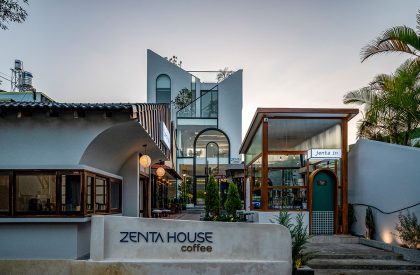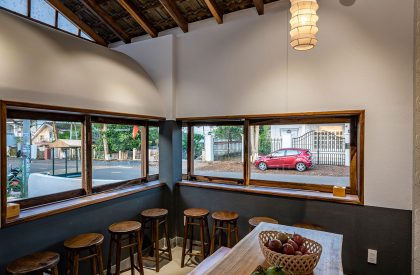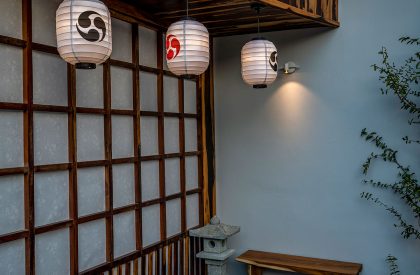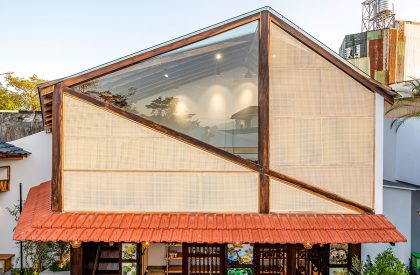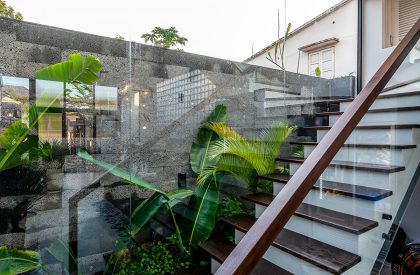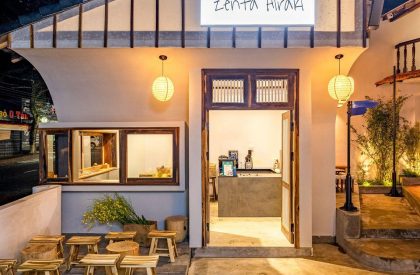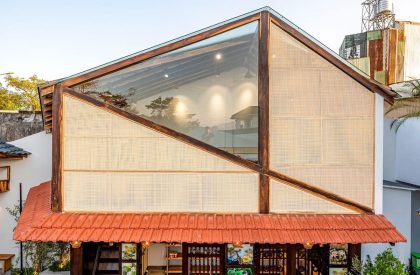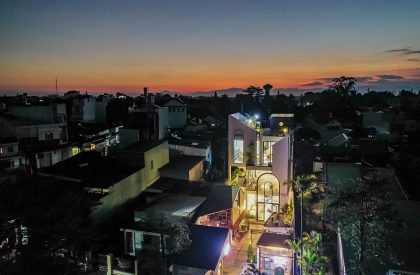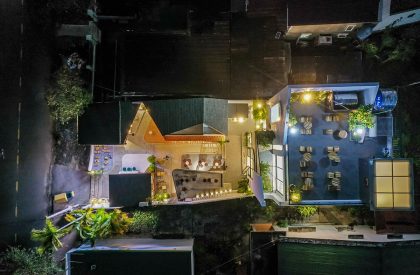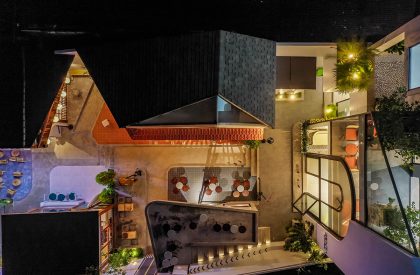Excerpt: The architecture project Zenta House Coffee by CONN Design combines five different interior themes to clearly show each style in each zone and blend with each other. The designers created a space with a little taste of the food-coffee neighbourhood, with different styles from exterior to interior that overall harmonise with each other to form a colourful and bustling small street.
Project Description

[Text as submitted by architect] CONN Design has applied the knowledge and experience gained to create this project, determined to turn Zenta House into a successful business model, and this is a very interesting journey.



The Zenta House Coffee Project is an interesting and special project for CONN Design. To complete the project, the designers carefully studied the geographical location and wind-sun direction and sketched architectural shapes. With indigenous identity, the designers use interior and exterior materials that are well adapted to the regional climate and research to combine five different interior styles in one project to clearly show each style in each zone and harmonise with each other.
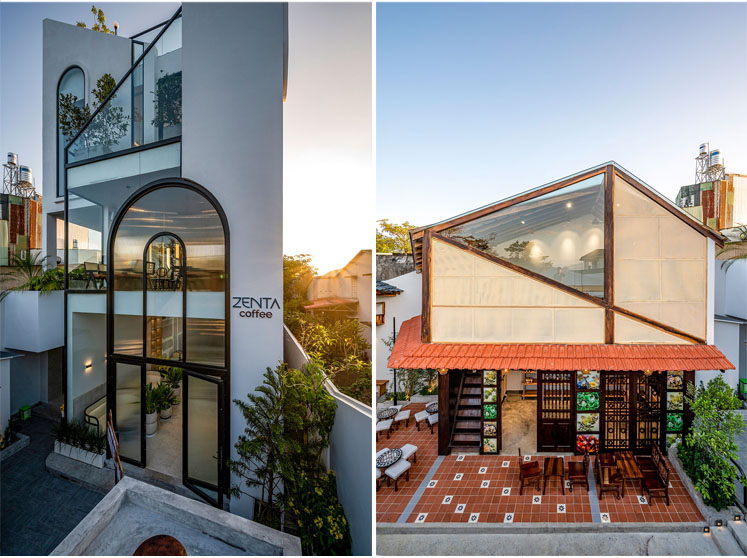



Zenta House is a service business model, so it needs to be open to the public, serving customers and the community. On this 300-square-metre lot, the designers used more than 200-square-metre of glass for the facade of the building. and the design of convenient transportation for customers and employees in the restaurant is also a top priority for the CONN team, with the aisle located in the centre, which is airy, spacious, and easily covers all the space. Services and products that Zenta House provides do not constitute a “dead spot” for the space; every location is utilised and frequented by people.




The designers created a space with a little taste of the food-coffee neighbourhood, with different styles from exterior to interior that overall harmonise with each other to form a colourful and bustling small street. Moreover, the challenge increases when the project has an indigenous identity in terms of shapes and harmoniously combining five different styles in a space, including Japanese, Korean, Vintage, Modern, and Retro.



The cafe sells views to satisfy young people’s desire to experience entertainment in a new way. It improves the position of customers when checking in, creating a difference “on the model” to go their own way. Architecture to attract, interior and exterior to create a feeling of bursting, and finally, the quality of drinks—the service affirms that Zenta House does not sell virtual value.




The architectural block with the language is the rhythm that goes up and down like mountains stacked on top of each other, creating a sense of cohesion in the shape but different in each individual block.
